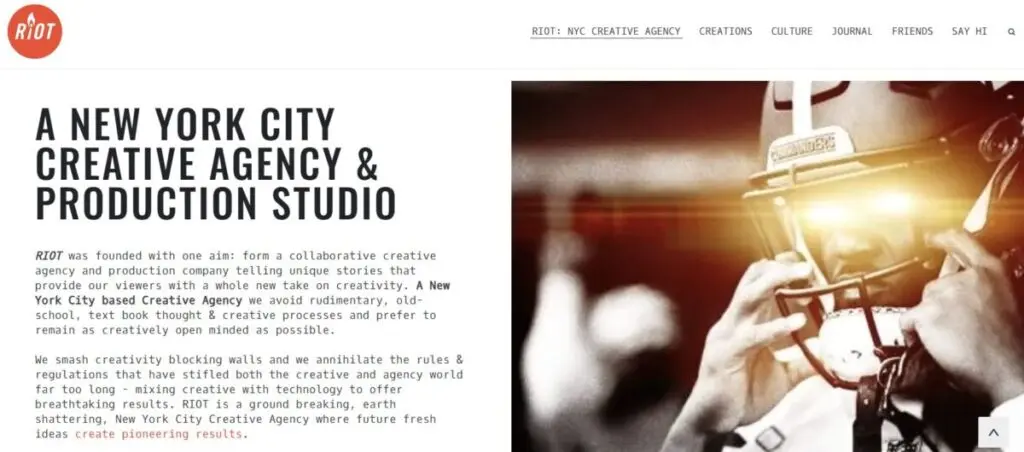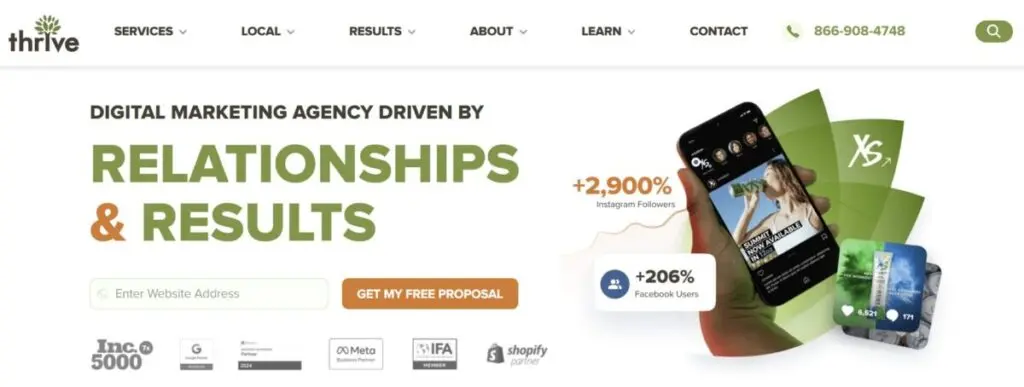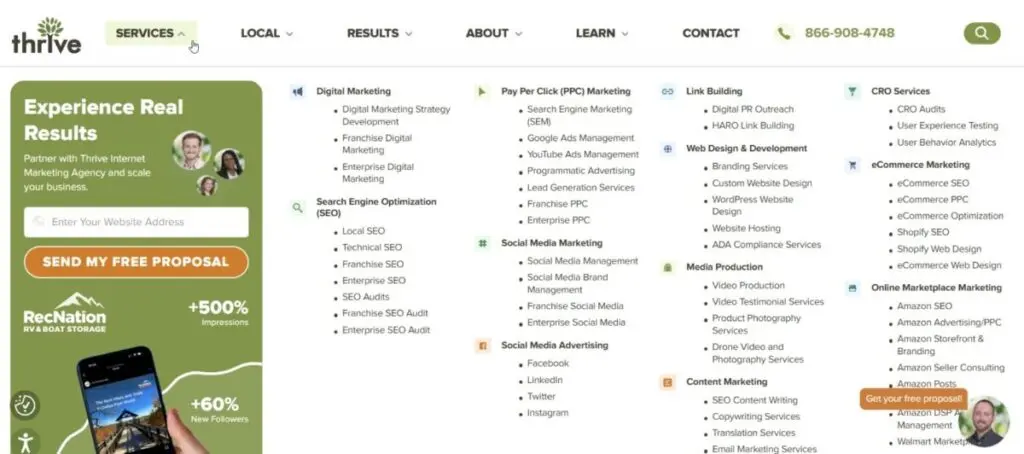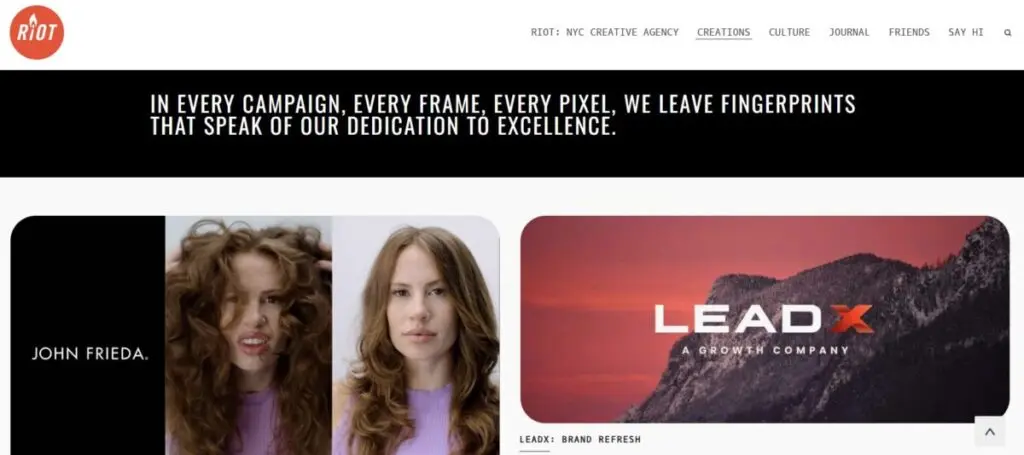There once was a time when virtually every larger business that wanted to carry out an advertising campaign would get on the phone with a local advertising agency and arrange for them to create a campaign for them. The traditional approach would be to commission TV or radio ads, create newspaper/magazine ads, or perhaps something marginally more original like billboards. And that would be that – marketing organized for another quarter.
But the internet, and particularly Web 2.0, changed everything. It gave opportunities for creators of all descriptions to display their skills, a marketplace where virtually everybody can buy and sell with only a limited outlay, and a whole new range of marketing opportunities for businesses to participate in. While many of the traditional agencies have moved with the times, adding the creative disciplines to their rosters, it has also provided many opportunities for specialist creative agencies to shine. However, with all this competition, you have to ask yourself, how can my creative agency differ from everybody else?
An essential part of strategizing is positioning. Positioning is how you want potential customers to view your agency. You need to find a way to position your agency to distinguish it from your competition. And it has to be a real difference, not just a flash logo or pretty graphics. You need to create a “brand” that represents your agency.
We have assembled a range of creative agency strategies you could consider implementing to help you set a point of difference between you and your main competition.
What Constitutes a Creative Agency?
Throughout this article, we will be referring to creative agencies. But what constitutes a creative agency, and how does it differ from any other type of marketing or advertising agency?
Obviously, the business first needs to meet the definition of being a marketing agency, i.e. it needs to offer a variety of services that assist its clients in their marketing or advertising. But to be a creative agency it needs to provide services that assist the creativity of its clients - for example, social media creativity, branding and design, creative production, advertising, and communication. Each specializes in distinct facets of creativity. Monolithic full-service agencies, trying to offer every digital marketing service, even if they include a few creative streams amongst their offerings, need not apply. Nor should traditional ad agencies or production companies.
Wrapbook describes the difference well: “Creative agencies provide innovative solutions to their clients’ needs by crafting inspired campaigns that are both uniquely theirs and collaborative.”
Clients in virtually any sector can hire creative agencies to tell their stories and solve their marketing problems.
A Selection of Creative Agency Strategies
1. Establish Your Creative Agency’s Values
The first creative agency strategy is perhaps the most fundamental of all. Decide upon the core values and ethos you want your agency to follow and ensure everything you do is consistent. You will want to align all your team’s actions, the clients you accept (or perhaps more importantly not accept), and the content you prepare, with your values and, in turn, your business goals.
Once you’ve determined your values, it’s up to you to ensure that you are consistent in everything – and that includes selecting appropriate clients. Don’t accept work from everybody, just because they are willing to pay. If you consider a clean green environment an important part of your ethos, for example, you would be hypocritical to take on mining or oil companies as clients.
Australian Business author, Andrew Griffiths, challenges his readers to define what characterizes their perfect client. Then you should step back and look at anyone you are having challenges with and see where the alignment breaks down. He believes you should publish your “Ideal Clients Value Set” - telling people that these are the characteristics of the people you do your best work with. As he says,
“Most businesses will take money from anyone with a pulse, and that’s exactly what they get. And when the relationship breaks down, as it will, you get the blame, creating a raving critic of you and your business.”
It’s far better to avoid having the “wrong” clients in the first place.
2. Consider Offering a Full-Funnel Approach
If you are setting up your agency, or are still in its early days, you might not yet have decided on the full range of services you offer. But it’s a fundamental decision that you need to make, and virtually everything else you do depends on it.
One creative agency strategy you could follow is to take the full-funnel approach and market yourself as a full-service creative agency. Here, you are offering to take care of your clients’ marketing needs from conception to strategy to production and design. You are willing to do all types of marketing (digital at least) and your client won’t have to go to somebody else when their needs change.
This is inviting for a client; once they have chosen to work with you on a project, and assuming they like your work, they don’t have to search elsewhere for somebody to meet their other marketing needs. It also provides you with existing clients willing to expand the work they contract from you – a ready source of income.
Of course, following the full-funnel approach does require that you have a sufficiently large team that covers all the skills necessary to meet client needs. You need to be realistic when following this strategy. It’s unlikely that a sole trading freelancer would have all the skills, or time, to offer this, no matter how good they are in their specialist niches.
However, then there is the issue, is a full-funnel agency still a creative agency? Sure, you will still offer as many creative services as previously, but if you offer more administrative and procedural services, are you dissolving the creative sheen around your image? This will depend very much on how you present yourself, including the highlights, visual imagery, and emphasis on your website and other marketing.
3. Alternatively, Tailor Your Services to Match Your Creative Specialties
A common strategy used by many creatives nowadays is to become a boutique agency, focusing on one or more specific niches. You will notice that we have hundreds of boutique agencies listed on this site – most of the agencies we show in our Influencer Marketing, Influencer Talent Management, Web Development, Social Media, eCommerce, and Branding sections would count as this. Each of these creative agencies has specific areas of expertise, meaning that their clients would probably use a selection of agencies, each catering to different needs.
RIOT is an example of an agency that emphasizes its creative side across its website.
They feature creative imagery and videos on their site, and even the language used emphasizes creativity, rather than administrative services. For example, rather than having a menu for “Case Studies”, as many agencies do, RIOT has “Our Creations”. And the types of case studies they share are categorized into Animation, Branded Content, Commercials, Directed, Featured, Narrative, Ooh, Sizzles, Sports, and Visual Identity - not the typical way a more traditional agency classifies its work.
In comparison, many full-service agencies often take a more conservative approach to their websites, focusing on social proof and what they offer. Take Thrive as an example:
As you can see, their homepage does not refer to creativity or claims of being a creative agency. The menu items are much more traditional. By necessity, the agency’s services are grouped as Services, and the agency then displays a comprehensive list of them when you hover over the menu name:
4. Determine the General Process You Will Follow with Your Campaigns
Every creative agency has its own approach and a set process for how it gets things done. You need to create this before you market yourself to the world and take customers on board.
The typical phases you should include in your process include:
- Discovery – learning a client’s needs – what challenges do they face or problems are they employing you to solve?
- Insights – what has your team learned from their discovery? Establish the key insights that will help you move forward in the project you are creating for your client.
- Ideation – at this stage many teams brainstorm ideas for the campaign, ultimately selecting the best and most innovative to put into practice.
- Execution – now’s the time to put your team’s creative skills into practice. Make any required content and deliver your campaign according to plan, on time, and within budget.
- Measurement – once your campaign is underway, keep track of the most relevant campaign metrics to ensure that you are meeting your client’s campaign goals. If you discover any problems, adjust your campaign execution to get things back on track again.
5. Select the Best Tools to Make Your Work Manageable
No matter what your specialty you are going to want to make things easy for you and your staff to carry out your work. Although funds may be tight in the early days of your business, you should budget to use the best tools possible to help you succeed in your tasks and be ready to take on more clients. Even a solopreneur agency running on a shoestring budget can’t succeed without some appropriate software.
The exact tools you use will depend on your specialty (meaning that the list can be very long for full-service agencies). However, you will typically look for tools to assist in some of the following areas:
- Word processing/spreadsheets etc., i.e. office-type software like Microsoft Office (Word/Excel/PowerPoint), Google Docs/Sheets/Slides, or Apple iWork (Pages/Numbers/Keynote)
- Graphics software, e.g. Adobe Creative Cloud (Photoshop, Illustrator, InDesign, and more), Affinity Designer/Photo/Publisher, Procreate, Canva (free if you’re on a limited budget), CorelDRAW, etc. You are creative, after all, so need industry-standard creative software.
- Video editing software, e.g. CyberLink PowerDirector, Adobe Premiere Pro or Adobe Premiere Elements if on a limited budget, Apple Final Cut Pro, Apple iMovie, etc.
- Project management software, e.g. Monday, Trello, ClickUp, Asana, or Zoho Projects.
- Cloud file storage, e.g. Box, Microsoft OneDrive, Google Drive, or Dropbox.
- Social media management software, e.g. Brandwatch, Loomly, Sendible, Referral Factory, KeyOrca, etc.
- Social media monitoring software, e.g. Digimind, YouScan, or Brand24
- Email marketing software, e.g. Campaigner, Brevo, Omnisend, SMTP, or EmailOctopus.
- eCommerce software, e.g. Sellozo, Levanta, Trellis, Threecolts, or Route.
- AI marketing software, e.g. Jasper, Flick, EBO.AI, or Beacons
You may not need all these different types of software in your early days as a creative agency, but be prepared to adapt your software library to match the needs of your clients.
6. Establish Yourself as a Thought Leader
One of the biggest mistakes that businesses make, including many creative agencies, is viewing the internet as being one gigantic selling channel. It is, of course, far more than that, and many people are quickly turned off by what they see as blatant money-grabbing opportunism.
One way your agency can make a positive impact online is by being viewed as a thought leader in some suitable niche – ideally a topic that will concern your target customers. For example, suppose you (or your staff) have expertise in photography. In that case, you can share your knowledge in many online forums, including Adobe’s product-specific forums, or even on your blog or YouTube channel.
Those people learning from your content and advice may not have a current need for a creative agency, but if they find they do in the future, you are likely to find yourself near the top of the queue of potential providers for them.
It’s similar to when you go to a conference. You generally don’t go there because you want the speakers to talk all about themselves. Instead, you want to learn from their experiences and pick up some useful nuggets of information. It’s the same with your creative agency. People will begin to notice what you have to say when they see value in what you are saying. They will begin to trust you and be prepared to take the risk of contracting you if they are in the market for a creative agency.
Indeed, there is even a network of nearly 50,000 marketing agencies (Agency Vista) that highlights agency thought leaders. “An agency qualifies as a thought leader on Agency Vista when it has the Verified badge, appears on recommended lists, and has an abundance of high star ratings.” They recognize that thought leaders are agencies that consistently deliver innovative strategies and outstanding results.
7. Networking is Essential for Finding Clients
You may have everything you need to make an excellent creative agency – tools, knowledge, staff, creativity, an attractive website, etc. But this will all mean nothing if nobody knows you exist. A successful strategy many agencies have tried is networking.
We don’t necessarily mean that you have to go to functions, meet people in the flesh, tell them what you can do for them, and hand them a business card. Although, that could be valuable if you find suitable opportunities and intend to work with local clients. What we mean by networking here is simply taking chances to collaborate with people and give them opportunities to get to know you.
You can do much of this collaboration online. Don’t forget that social media is supposed to be social. You shouldn’t just use it to hawk your services. You should use it to engage with the types of people you would like to be your customers.
There are still many ways to build your name online – forums, subreddits, LinkedIn and Facebook groups, Discord servers, the list goes on. Sure, networking takes time, but it builds visibility, and puts your name in front of potential customers, without having to resort to formal advertising.
Just remember not to become too sales-focused in your conversations, however. People go to those forums to be educated and inspired and to find solutions to problems. They typically don’t go there to hire a creative agency, particularly one they have never heard of before.
Webflow makes the interesting point that you should collaborate with complementary agencies. Unless you’re a creative full-service agency, you probably won’t be able to fully meet all the marketing needs of your current and future clients. By networking with “the competition” you may find that you have enough differences to warrant a collaboration. Focus on networking with agencies that have strengths in areas that you're weak (or non-existent). However, remember that any agency collaboration will need to be with someone with similar values, work ethic, and quality standards. Your networking may give you an indication of whether you are likely to find any problem here.
8. Be Transparent with Your Clients
Back in the pre-Internet era, some firms kept themselves distant from their customers. They were often the only business you could go to in your area and effectively had a monopoly on their local market. They didn’t have to market much, often not much more than making a few signs and an entry in your local Yellow Pages (this was a directory of services in your area, often in a gigantic, yellow-paged book). Often the only way you could ask questions of them was by filling in a long form, or if you were lucky, telephoning them, making sure that you called them during office hours.
Nowadays it is much harder for businesses to remain aloof and distant from their customers. You are only a Google search away from them. Consumers actively research purchases and compare products and prices. And they expect firms to be active on social, ready to answer their questions, preferably in real-time.
Theoretically, you could still hide everything behind a firm. You will undoubtedly see websites that look pretty but tell you nothing; all style, no substance. Indeed, there are still a few firms surviving somehow with no style, and no substance. But you can’t operate like that for long before becoming irrelevant to your target audience. Nowadays you’re expected to make everything easily visible, making it easy for potential customers to make their decisions.
Creative agencies are no different from anybody else here – and there are probably far too many uninformative good-looking websites in this industry. But you are far more likely to attract customers if they feel that they are gaining value from perusing your website.
9. Ensure You and Your Clients’ Expectations Are Aligned
While we have written this article from the point of view of creative agencies, highlighting a range of high-level strategies they could follow to improve their business operations, we do need to come back to the fundamental question that each of your potential clients will have asked themselves: why are they wanting to work with a creative agency, rather than creating (and managing) or their marketing resources internally?
Often the reason will be because they don’t feel that creative marketing is a right fit for their team. They probably don’t have a marketing team (or only a small one that manages the marketing budget, rather than actually “doing it”). Their team may feel overwhelmed with their existing work, and not have the time to take on creative marketing work. Alternatively, they may have staff comfortable with some creative marketing tasks, but not others, for example, happy to operate the company’s social accounts, but not their PPC advertising. In that case, the business may opt to work with a specialist agency, rather than a full-service one.
10. Focus on the Creativity of Your Work in All Your Case Studies
Somewhere between a strategy and a tactic is highlighting the creativity of your work in your case studies. You could argue it’s a tactic because it is a potential step along the way to meeting your goals. However, we are looking at it more as a strategy, because it continually shows your website viewers what you can do - and that “what” involves creativity. An individual case study may not represent an action plan, but your case study collection represents your body of work and emphasizes that you are truly a creative agency more than anything else. Your work shows who you are and what you can achieve.
We’ve already shown RIOT’s efforts to position itself as a creative agency. Their body of case studies hammers home the point. They contain pages of case studies, all written up in detail, emphasizing the creativity involved.
Each case study is a mini piece of art in itself.
11. Highlight Authenticity in Brand Storytelling
Continuing with RIOT’s work, their Nutrafol x Sephora: Skin case study is a masterpiece in brand storytelling. Some relevant statements from the case study include: “In our latest creative rendezvous, we teamed up with Nutrafol and Sephora to bring their Skin Nutraceutical project to life”, “This creative collaboration allowed us to zoom in closer”, “Nestled within the vibrant heart of NYC, our creative studio transformed into a crucible of creativity,” “This creative collaboration was all about the art of subtlety and the power of light to perfectly harmonize our model’s natural beauty,” “The fusion of visuals and narrative crafts a cohesive story.” The descriptions continue, emphasizing the creativity of the whole project. RIOT leaves no doubt in the minds of the reader (and viewer as there are sumptuous photographs and video content) that they have devised, masterminded, created (can’t avoid the word), assembled, and run a truly creative campaign.
But one of the pivotal parts of this case study is its emphasis on storytelling: “ Nestled within the vibrant heart of NYC, our creative studio transformed into a crucible of creativity. Amidst our space, we rediscovered a treasure of portraiture—our mid-century modern studio’s original, 40s-era skylight dome. This architectural relic became our source of natural illumination, casting a radiant glow that embraced our model in the soft embrace of perfectly diffused daylight.”
Why should you limit your storytelling to the ads you create? You can just as easily tell stories yourself, and make it a focus of your agency’s persona.
Yard NYC also understands the power of a good story. For example, they designed and executed an integrated campaign strategy for Original Penguin, which they called Original Good Time. Yard NYC’s case study uses images and videos sumptuously and is almost a work of art in itself. “The Original Good Time positions Penguin on the inside of the country club world, but with a self-aware subversive edge. With a cast of unexpected characters, this tongue and cheek campaign hero’s confident style and a love for a life well lived.”
12. Consider Specializing in the Niches You Cover
While the bulk of this article focuses on creative agencies specializing in the services they offer (namely the creative ones), nothing is stopping you from specializing in other ways. That way, you can become known as the go-to agency for whatever your focus is.
Gates is an excellent example of this. They describe themselves as “Gates is an integrated creative agency specializing in beauty, fashion, and retail”. Note the double specialization there:
- Creative agency
- Beauty, fashion, and retail
When you go a bit further into their site, and see the services they offer, you can see that they consider “creative” to mean brand development, packaging, brand campaigns, visual merchandising, and product development - as long as you operate in the beauty and fashion sector.
Gates also believes
“in the art of storytelling and the impact of voice, because brands should be seen - and heard”.
Wrapping Things Up – Employing Creative Agency Strategies
The creative agency strategies you choose to implement should seem very personal to your agency. They indicate your positioning in the marketplace and the points of difference you can bring when compared to other similar agencies.
As we have seen, your strategies require you to engage in much introspective thinking, establishing who you are and who you want to represent. You are creating a brand that is far more than a few pretty graphics and a lick of paint on an office block (if you have one). These strategies go further – they help you establish the entire direction your creative agency needs to take for you to succeed in your goals.










